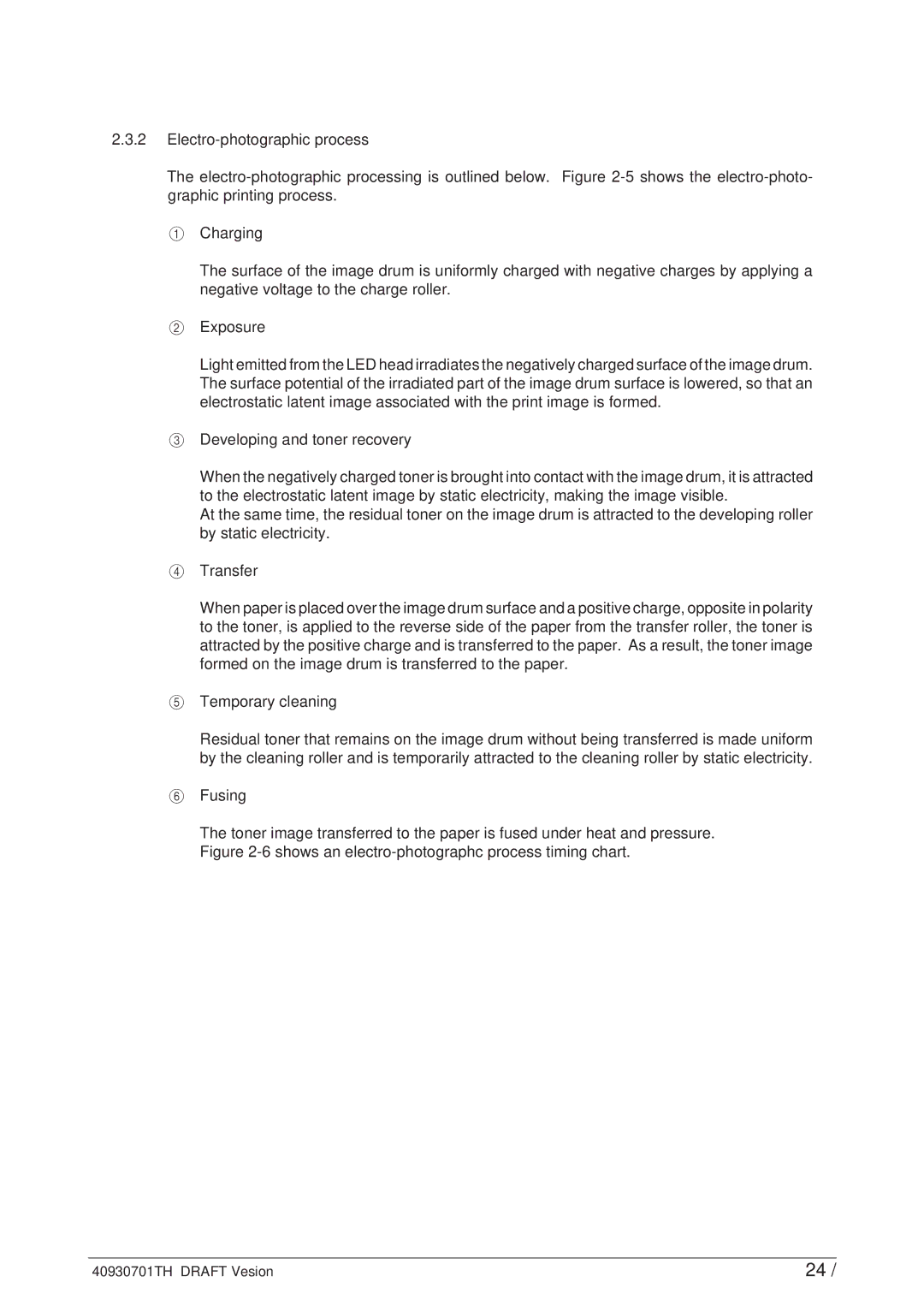2.3.2
The
1 Charging
The surface of the image drum is uniformly charged with negative charges by applying a negative voltage to the charge roller.
2Exposure
Light emitted from the LED head irradiates the negatively charged surface of the image drum. The surface potential of the irradiated part of the image drum surface is lowered, so that an electrostatic latent image associated with the print image is formed.
3Developing and toner recovery
When the negatively charged toner is brought into contact with the image drum, it is attracted to the electrostatic latent image by static electricity, making the image visible.
At the same time, the residual toner on the image drum is attracted to the developing roller by static electricity.
4Transfer
When paper is placed over the image drum surface and a positive charge, opposite in polarity to the toner, is applied to the reverse side of the paper from the transfer roller, the toner is attracted by the positive charge and is transferred to the paper. As a result, the toner image formed on the image drum is transferred to the paper.
5Temporary cleaning
Residual toner that remains on the image drum without being transferred is made uniform by the cleaning roller and is temporarily attracted to the cleaning roller by static electricity.
6Fusing
The toner image transferred to the paper is fused under heat and pressure. Figure
40930701TH DRAFT Vesion | 24 / |
